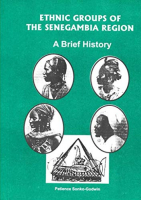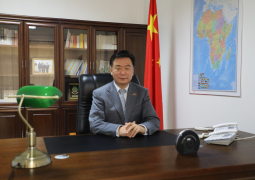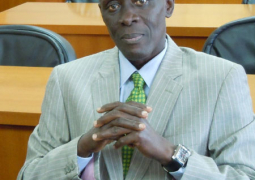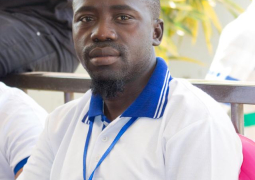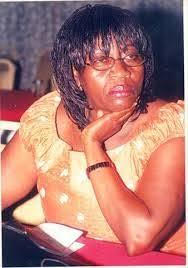
Books reviewed by Professor Jean Dominique Penel and Dr Cherno Omar Barry
Ethnic Groups of The Senegambia, A Brief History - 1985
Mrs Patience Sonko-Godwin is a historian who did her post-graduate studies in history first at Fourah Bay College, Sierra Leone, and then at the University of California, where she obtained her Master's degree. In 1983, when WAEC introduced changes in the history curriculum, and at a time when, since 1981, The Gambia and Senegal had formed the Confederation, Mrs Patience Sonko-Godwin, a teacher, wanted to clarify, for her students and for the general public, the general history of the sub-region through the particular history of the main ethnic groups that populate the Senegambian space. She, therefore, published Ethnic Groups of The Senegambia, A Brief History (65 pages, with seven illustrations and six maps) in Banjul, BPMRU, in 1985. The new edition, proposed in 1988, has already been reprinted in 1994.
The author was faced with an initial problem: should all the ethnic groups in the Senegambian region be covered? In a book which aims to popularise the subject for a wide audience, a choice had to be made: to limit oneself to those who are currently the most numerous and about whom there is sufficient oral and written information – and to conform to the requirements of the History Syllabus in force in schools. Consequently, the smaller groups have only been treated as the larger ones. The author does not mean to minimise the minority ethnic groups that have participated like all the others in the collective development. However, since this is not a study for history specialists, it is restricted to the main sub-regional groupings.
The book contains six chapters corresponding to the six groups selected: Mandinka, Wolof, Serer, Fula, Tukulor, Serahuli, and Jola. For each of these ethnic groups, the author endeavours to situate the origin, which is often difficult because the historian must distinguish between the discourses and legends that the populations relate to and the verifiable and objective statements, which are the only ones that are scientifically acceptable.
Then, Ms Sonko-Godwin describes the migrations, the maximum expansions, and the stops and declines of certain local empires throughout the last centuries. However, it is not enough to give facts; situations and their causes, which are sometimes complex and intertwined, must be analysed. Thus, when this study reports on the end of the Kaabu empire of the Mandingos or the decline of the Wolof and Fula kingdoms, the reader is offered explanations that are based on various registers: From the 19th century onwards, conflicts with the British and the French, who were themselves violently opposed to each other, were added to the local ethnic antagonisms - which obliges the historian to carry out a detailed analysis that cannot be confined to a simple demonisation of the Europeans.
Therefore, it is an opportunity for students to reflect on the history of their Senegambian sub-region and to ask themselves about the different actors and the causes of the transformation of situations throughout the centuries. Whatever the past, it is important to know it because it informs the present. But regional history also shows the possibility of changing and modifying the data, as our predecessors have done. We are in solidarity but not prisoners of history.
Social and Political Structures in the Precolonial Periods - 1986
In 1986, while still Principal Cultural Officer in the Research and Documentation Department of the National Council For Arts And Culture, Mrs Patience Sonko-Godwin published an 80-page booklet (published locally in The Gambia) entitled Social and Political Structures in the Precolonial Period with the subtitle Ethnic Groups of The Senegambia Region.
One of the reasons for writing this paper was the introduction of the New Education Policy, which introduced a reformed education system and created new examinations (JSSCE in 1995 and WASSCE in 1998). As history curricula were moving towards a better knowledge of the cultures and social movements of the sub-region, historians had to be concerned with helping students better understand their own space and past.
History offers the observer changes due to various political, warlike, economic and other reasons. However, we soon realise that the same causes do not have the same effects on different populations because the social structures are not identical. It is therefore important to shed light on the cultural framework that gives meaning to the behaviour of historical actors (apart from the personal side of individuals). Groups that coexist may have common or different values, and the historian must consider this. For example, some societies are stratified and hierarchical in the Senegambian region. In contrast, others are much more egalitarian: this cultural fact will inevitably have consequences in the history of the population.
Patience Sonko-Godwin 's work is divided into two main parts: the first (pp. 2-52) is devoted to analysing the social structure, and the second (pp. 54-76) is to the political structure. Local societies are predominantly hierarchical, and the author examines the components of this hierarchy: nobles and freemen (with different specialities), artisans and slaves. In addition, each society organises age groups according to specific rules (of which initiation is one of the best-known aspects). Regarding political structures, it is worth studying how a body of great figures served the royalty (according to matrilineal or patrilineal modes), generally, elders and warlords who assisted it. As the author notes, noblewomen are not excluded from power, and some are sometimes true queens. Since there are also segmental societies, not (or only slightly) hierarchical, we can speak of 'acephalous societies, as is the case for the Diola groups, whose organisation, quite different from other neighbouring groups, must be explained.
To show the social and political similarities and differences, comparative tables (p. 51 and 76) show the results for the following Senegambian groups: Mandinka, Wolof, Serer, Fula, Toucouleur, Sarakolé and Diola. In conclusion (pp 77-80), these societies' social and political changes are quickly sketched out since they are no longer to be dealt with sociologically but historically.
The document is illustrated with about twenty engravings by Pa Sulay Sey and diagrams and maps by the author. This project of Mrs Sonko-Godwin, to help raise collective awareness of the Senegambian reality, has not aged since this booklet was reprinted in 1994 and 1997.
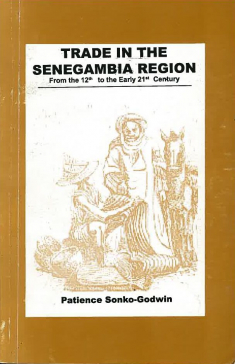 Trade in the Senegambia Region - 1988
Trade in the Senegambia Region - 1988
In 1988, Mrs Patience Sonko-Godwin published in Banjul, thanks to the Shell Company of The Gambia, a beautiful 20-page booklet entitled Trade in The Senegambia Region, Precolonial Period. Three illustrations by Pa Sulay Sey (including the cover) and two maps accompany the text. It is not a substantive study but a review of the trade issue before colonisation. It complements the author's two previous publications: Ethnic Groups of the Senegambia Region: (I), A Brief History, (II) Social and Political Structures.
The text is structured in ten points. The author first defines (1) the notion of exchange and recalls the desire of Europeans, until the end of the 19th century, to take over the markets of this region by bringing a certain number of goods, for which they set the prices, in exchange for various goods (gold) and slaves. However, (2) before this external intrusion, very old local markets existed, which extended as far as Morocco and North Africa. In region (3), merchants were called Jula (Dyula): they transported goods. They created their trade networks (e.g. the Sarahuli), and when Islam penetrated West Africa, they were often also propagators of this new religion (e.g. the Jahnke).
Foreign trade (4) was driven by the search for rare but highly sought-after goods from the Far East. Among the Europeans, the Portuguese (5) undertook the first major expeditions; they reached the Gambia River in 1456. The first slave trade had begun a few years earlier in the Rio de Oro (1441, 1443), and the discovery of gold in Ghana (Gold Coast) in 1475 led them further afield: Vasco da Gama reached India in 1498. Shortly before, Christopher Columbus had arrived in the Americas in 1492 on behalf of the Spanish, heralding the invasion of the centre and south of the continent. The infamous 'triangular trade' began in 1530 and quickly grew to enormous proportions. The Portuguese, who intermarried easily with the local populations, were supplanted in West Africa by the Dutch, French and English from the beginning of the 17th century. The rivalry between the French and the English (6) resulted in the artificial creation of two countries: Senegal and the Gambia. The commercial and military struggles stabilised with the Treaty of Paris in 1783. The author then traces the trade (7) and transport (8) of slaves. Under pressure from religious and humanitarian groups, slavery was banned (9) in England as early as 1772, then by the British in 1807 and finally by all in 1833. The creation of lands of freedom (Freetown, Liberia, etc.) was necessary for the former slaves, including those freed on the ships bound for America and who formed part of the Krio or Aku population. In the early 19th century (1814), the French and English divided their respective "domains" between the region and the town of Bathurst was founded. After slavery (10), legal trade between Africans and Europeans could develop. The introduction of foreign companies (CFAO, SCOA, UAC, etc.), the introduction of crops such as groundnuts, the appearance of local traders, etc., date from this period.
Patience Sonko Godwin's little book provides a clear and simple set of information that gives an idea of this pre-colonial trade.
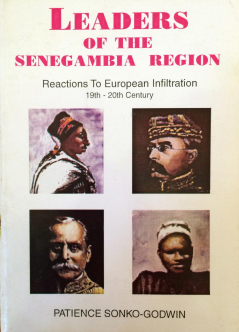
Leaders of the Senegambia Region - 1995
Suppose there is one area in which Gambians (one should say "Gambian women") have done much work; it is the history of The Gambia, knowledge of which is fundamental to the formation of national identity. In 1995, Mrs Patience Sonko-Godwin published a book entitled Leaders of the Senegambia Region, subtitled Reactions to European Infiltration, 19th -20th Century, specifically destined for secondary school students in The Gambia. This 96-page book (published by the BPMRU, Kanifing) presents the sub-regional history through people who were, both on the foreign side (British and French) and on the local side ('Senegalese' and 'Gambian' - terms that only have meaning in the colonial division), decisive actors throughout the early to the late colonial period. Twenty-eight illustrations (photos and drawings), six maps and a glossary give readers the means to make the essential moments of this relatively recent history more concrete and vivid.
The first chapter outlines the European presence in the region. The three personalities presented afterwards resisted the French in the northern part of Senegambia. Chapter II is devoted to Lat Jor (born in 1842 and son of Ngone Latir) and how he opposed Faidherbe and the French, who finally got the better of him (1888). Chapter III explains how Momodou Lamin Drammeh (born in 1831) sought to create a Serahuli empire to stand up to the French and the Toucouleurs and how, after bloody struggles, he died in 1889 in the Senegal-Gambia border area. Chapter IV portrays Alburi Njie, King of Jolof (born in 1840): he faced the invasion of Amadou Sheiku and French pressure and died assassinated in 1891. The next three chapters are more concerned with the Gambia and Casamance. Chapter V deals with Foday Ebrima Kombo Sillah (born in 1830 in Gunjur), who fought against the British and the French (he died in exile in Saint Louis in 1894). Chapter VI recalls how Foday Kabba Dumbuya (born in 1818 on the northern bank of the Gambia River) made life difficult for the colonialists and was killed in 1901 by the French. Finally, the set ends with Musa Moloh Bandeh, in Chapter VII, who was deported by the British to Sierra Leone before returning to The Gambia, where he died in 1931. These narrations allow us to discover the complex interplay between local chiefs (Wolofs, Fulani, Mandinka and Jola) and the rivalry between the colonial powers, allying or waging war with each other according to the strategies and the balance of power. But colonial penetration took place against strong resistance from the populations and their chiefs.
The last chapter (VIII) deals with the colonial period itself and the path to independence in the British (Gambia), French (Senegal) and Portuguese (Guinea-Bissau) areas.
Other books
Mrs Patience Sonko-Godwin has also published two other books whose reviews will be brought to light soon.
· Development of The Local Industries in The Senegambia Region
· A leading Pioneer in the Development of The Gambia: The Very Reverend JC Faye


